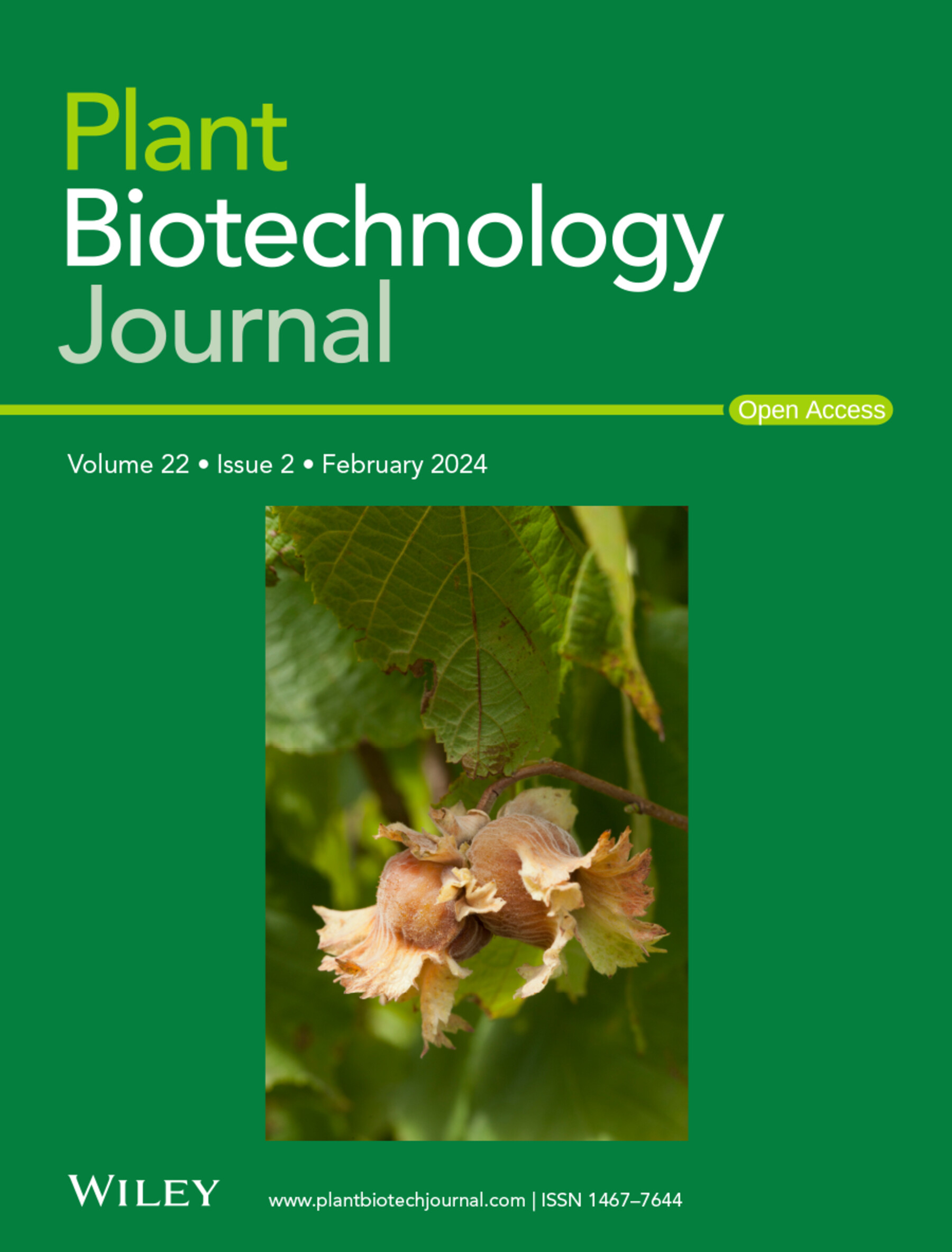An alternative splicing caused by a natural variation in BnaC02.VTE4 gene affects vitamin E and glucosinolate content in rapeseed (Brassica napus L.)
IF 10.1
1区 生物学
Q1 BIOTECHNOLOGY & APPLIED MICROBIOLOGY
引用次数: 0
Abstract
Vitamin E (VE) is essential for plants and animals. Rapeseed oil is rich in α-tocopherol (α-T), which is the most bioactive form of VE in human body. This study demonstrated that VE in rapeseed seeds was mainly controlled by embryo genotype through incomplete diallel hybridization. By genome-wide association study, the QTL-qVE.C02 associated with VE and α-T contents was detected in a Brassica napus association population, and the phenotypic contribution rate was up to 18.71%. BnaC02.VTE4, encoding gama-tocopherol methyltransferase, was proved as the target gene of qVE.C02 by genetic complementation. Two BnaC02.VTE4 haplotypes were identified in the population. Compared with BnaC02.VTE4HapH, a point mutation from A to G at the 3′ splicing site of the second intron were found in BnaC02.VTE4HapL, resulting in alternative splicing and early termination of translation. HapL1052(G-A), the site-directed mutagenesis fragment of BnaC02.VTE4HapL, was introduced into Arabidopsis vte4 mutant and 8S088 (a BnaC02.VTE4HapL accession), and the contents of VE and α-T in atvte4-4 and 8S088 seeds were increased by 90.10% to 307.29%. These demonstrated the point mutation as the causal for the difference in VE biosynthesis in rapeseed. Further, this variation also led to the significant difference in glucosinolate content between BnaC02.VTE4HapH and BnaC02.VTE4HapL accessions. Multi-omics analysis suggested that the expression of some genes and the accumulation of several metabolites related to the glucosinolate biosynthesis pathway were significantly increased in BnaC02.VTE4HapL group. Moreover, by functional marker identification, the BnaC02.VTE4HapH was found to be selected during domestication. Our findings offered promising opportunities for enhancing rapeseed quality traits.求助全文
约1分钟内获得全文
求助全文
来源期刊

Plant Biotechnology Journal
生物-生物工程与应用微生物
CiteScore
20.50
自引率
2.90%
发文量
201
审稿时长
1 months
期刊介绍:
Plant Biotechnology Journal aspires to publish original research and insightful reviews of high impact, authored by prominent researchers in applied plant science. The journal places a special emphasis on molecular plant sciences and their practical applications through plant biotechnology. Our goal is to establish a platform for showcasing significant advances in the field, encompassing curiosity-driven studies with potential applications, strategic research in plant biotechnology, scientific analysis of crucial issues for the beneficial utilization of plant sciences, and assessments of the performance of plant biotechnology products in practical applications.
 求助内容:
求助内容: 应助结果提醒方式:
应助结果提醒方式:


